Dr. Benjamin Jones (Associate Professor of Physics)
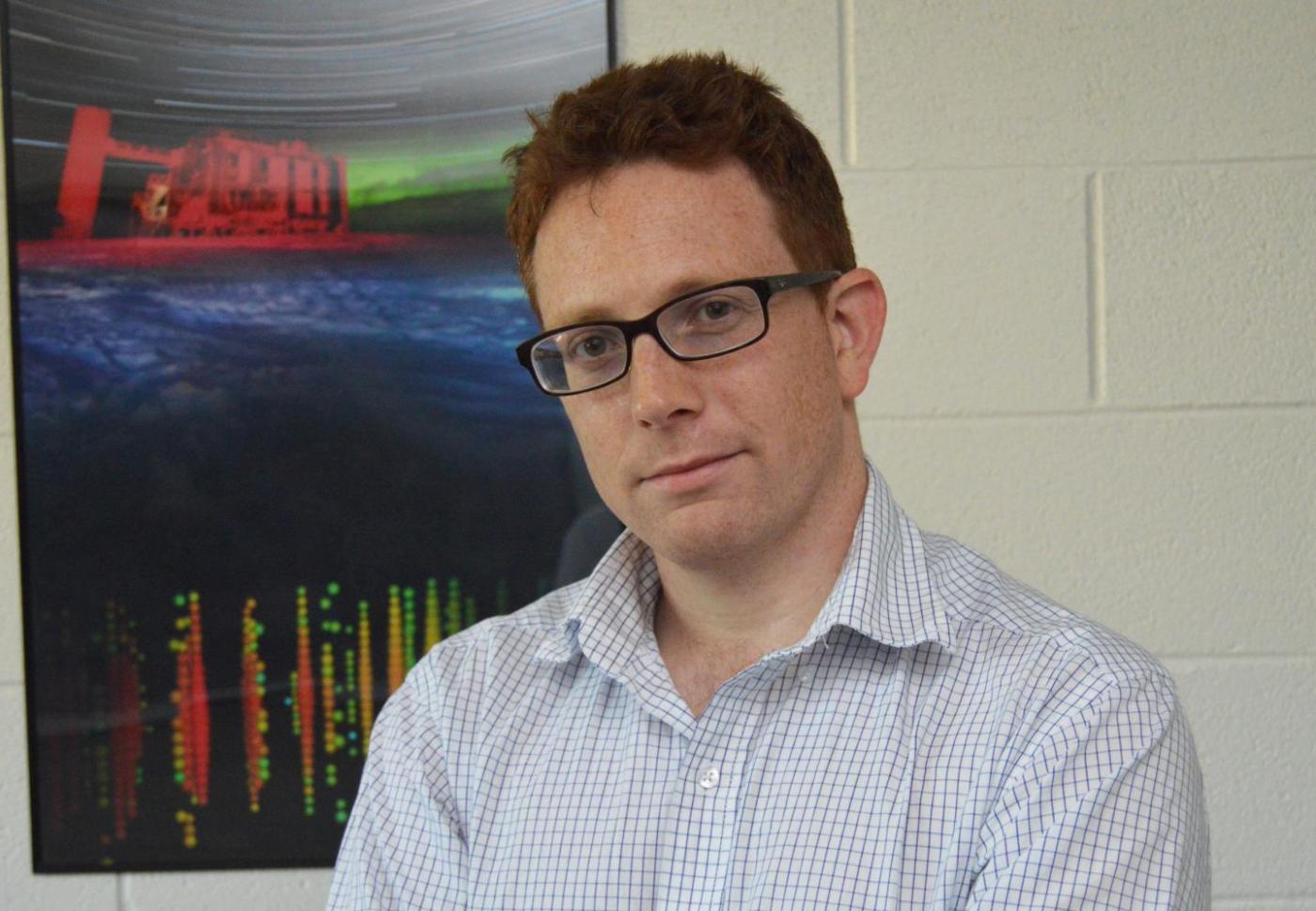
Benjamin J. P. Jones is an Associate Professor of Physics at UTA. He received his undergraduate degree from Cambridge University and his PhD from the Massachusetts Institute of Technology. His PhD thesis work, which probed the properties of atmospheric neutrinos at the IceCube Neutrino Telescope and neutrinos from particle accelerators with liquid argon time projection chamber technology, was recognized with the Tanaka Dissertation Award from the American Physical Society. Jones’s research group at UTA focuses on neutrino physics and astrophysics, in particular the nature and size of the mass of the neutrino mass, development of barium tagging for neutrinoless double beta decay, and searches for exotic phenomena such as oscillations of sterile neutrinos. He is co-chair of the Speakers and Readers Committee for the NEXT neutrinoless double beta decay collaboration, served as co-leader of the US Snowmass Process Neutrino Properties Working Group, and is an associate director of the UTA Center for High Energy and Nuclear Physics and co-Director of the UTA Center for Advanced Detector Technology.
Dr. David Nygren (Presidential Distinguished Professor of Physics)
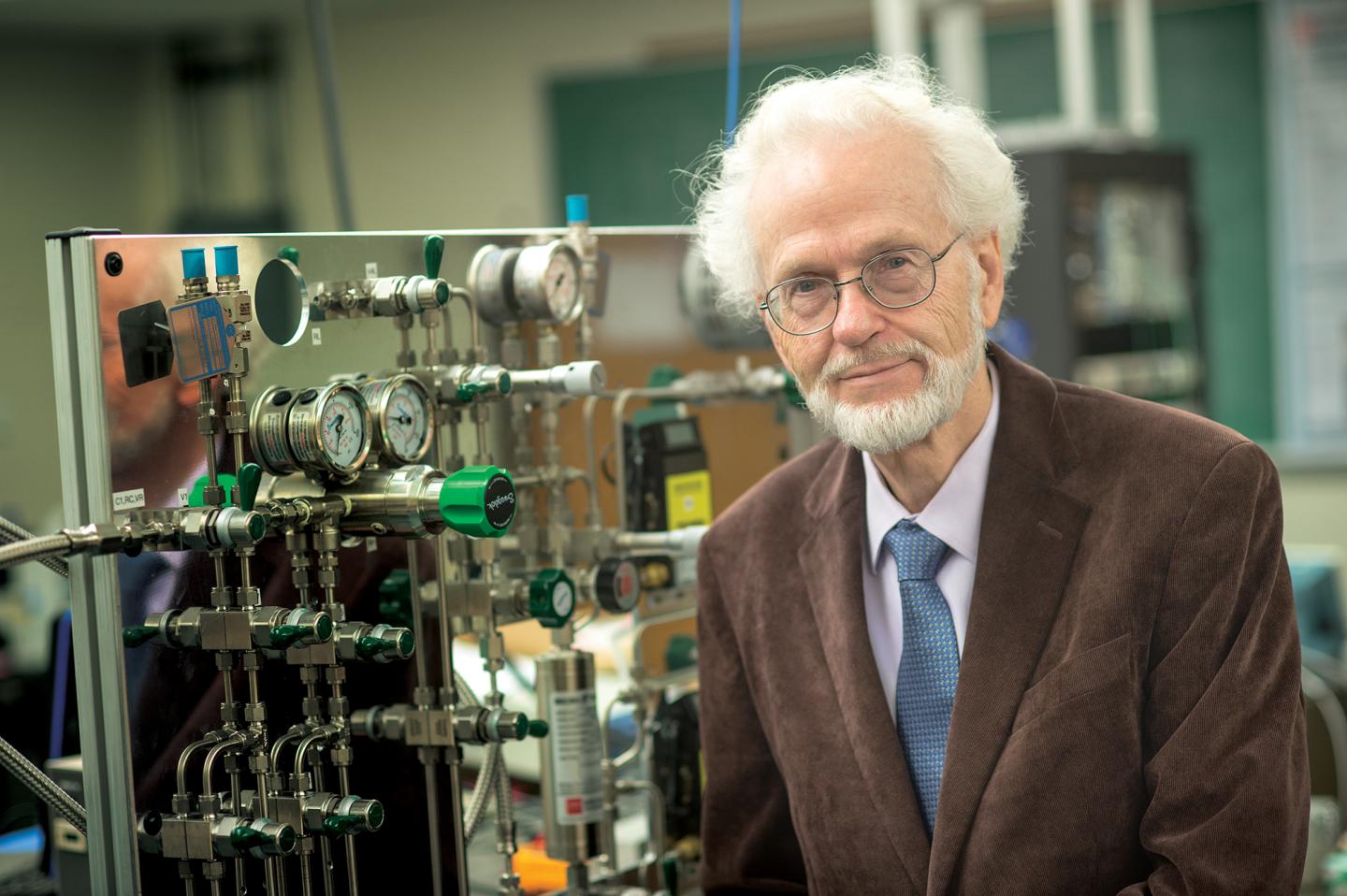
David R. Nygren a Presidential Distinguished Professor of Physics at UTA. He is known for inventing the Time Projection Chamber, or TPC, used worldwide for over three decades in a variety of applications in particle detection and discovery from relativistic heavy ion collisions to the search for Dark Matter and extremely rare nuclear decays. He is a member of the National Academy of Science; fellow of the American Physical Society; recipient of the Panofsky Prize of the American Physical Society, the Ernest Orlando Lawrence Award from the Department of Energy, the Berkeley Lab Prize – Lifetime Achievement Award, and the Marie Sklodowska-Curie Award from the IEEE. Nygren is the co-Spokesperson of the international NEXT collaboration, and has made wide contributions to particle physics including development of the Digital Optical module concept for IceCube Detector, invention of column-based pixel array architecture for high-luminosity applications, invention of low-dose mammography systems, and origination of the QPix concept for efficient sparse readout of large liquid argon TPCs.
David Nygren’s Wikipedia: https://en.wikipedia.org/wiki/David_R._Nygren
Dr. Krishan Mistry (Postdoctoral Research Fellow )
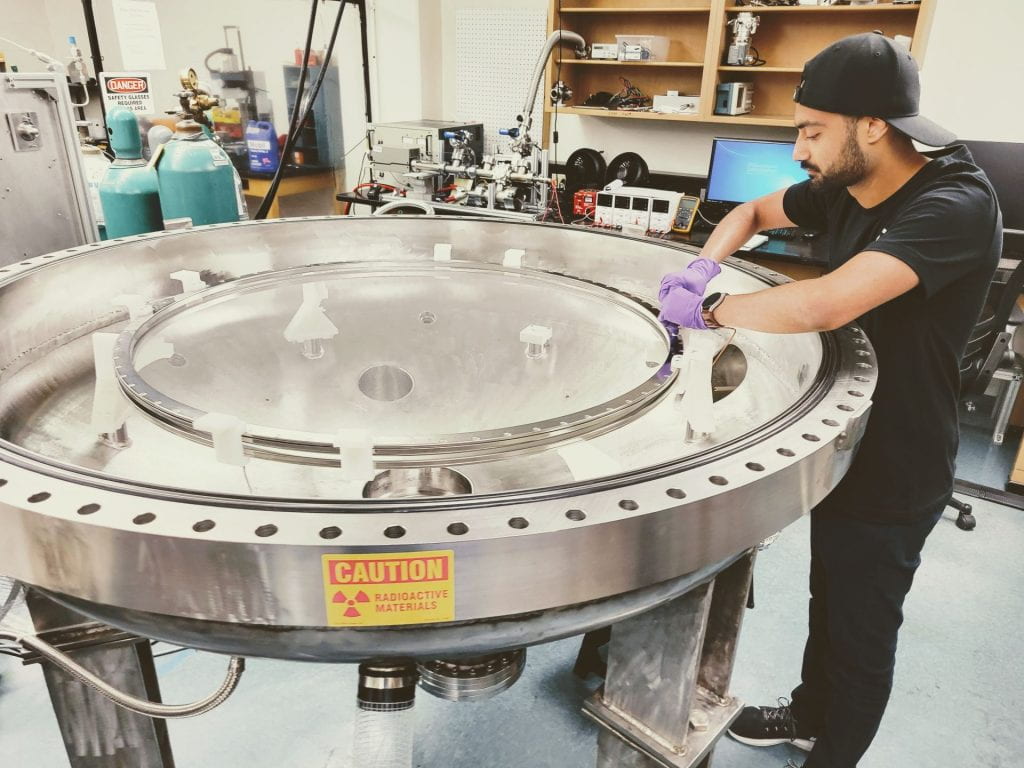
Krishan Mistry is an Assistant Professor of Research at UTA. He received his undergraduate degree and PhD at the University of Manchester in 2021. His research is focused on understanding the properties of neutrinos which, may help us elucidate the origins of the universe. His PhD research received the Springer Thesis Award in 2023 where he studied the interaction of neutrinos with matter making the first measurements of the total and differential electron neutrino cross section on argon with the MicroBooNE liquid argon time projection chamber. His current area of research at UTA focuses on the NEXT neutrinoless double beta decay experiment. He constructed the electroluminescence and cathode regions for the NEXT-100 experiment which will begin operation in 2024, leads efforts in using Machine Learning to analyze double beta decay topologies, and works on developing a new fast simulation with detailed physics for gaseous time projection chambers.
Nicholas Kaelan Byrnes (Graduate Student)
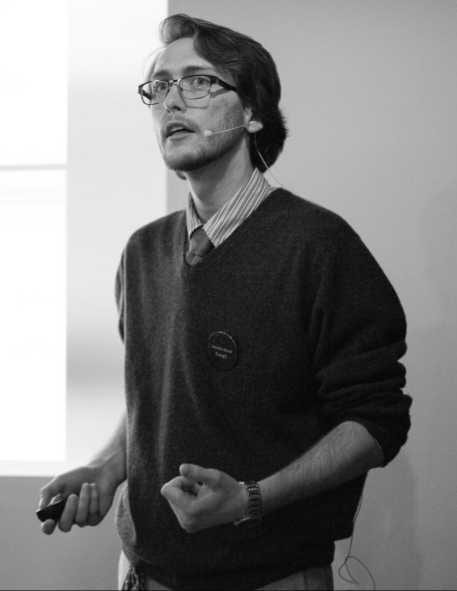
Nick Byrnes is a PhD student at University of Texas Arlington studying physics. A recipient of the University of Texas Arlington Presidential Merit Scholarship, he graduated cum laude from the University of Texas Arlington in 2018, majoring in physics and minoring in mathematics though the University’s Honors College. His primary field of study during this time was positron surface spectroscopy. He started his graduate studies working on the advancement of biochemistry techniques to apply to the search for neutrinoless double beta decay through the detection of barium. He was awarded second place at the University of Texas Arlington ACES poster competition for this research. Nick has since moved on to the development of novel gaseous particle detectors, focusing on the creation of a high speed camera-interfaced Time Projection Chamber for the direct observation of particle interactions. Nick is a recipient of the Michael and Wanda Ray Fellowship, University Scholars Endowment, and James L. Horowitz Physics Scholarship.
Enakshi Dey (Graduate Student)
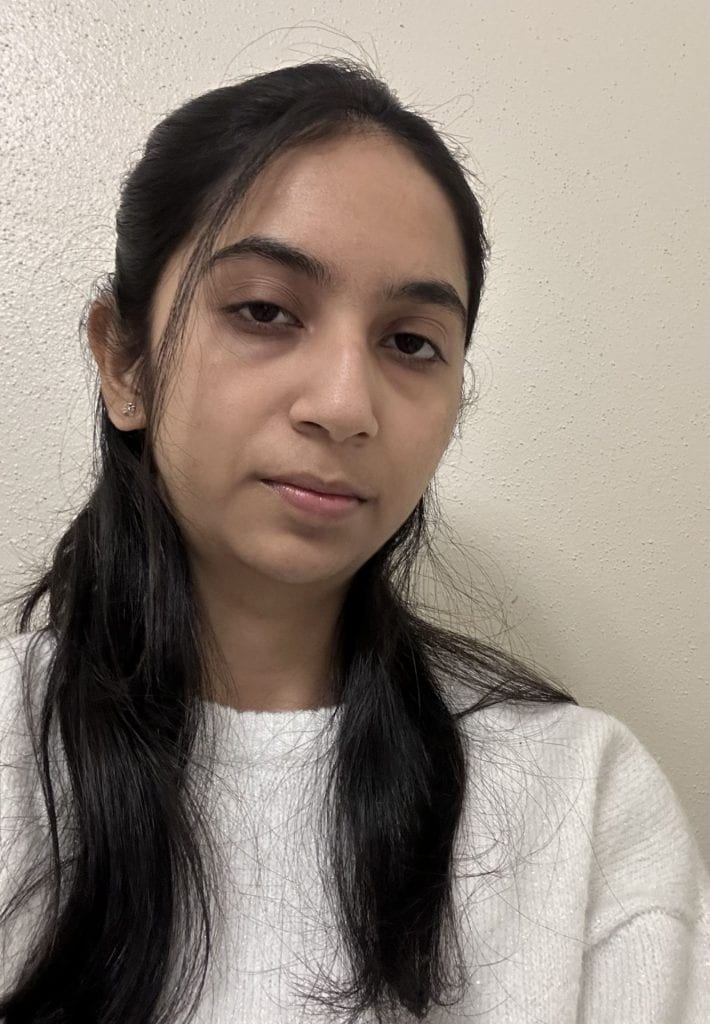
Enakshi is a third-year graduate student . She completed her masters from the University of Calcutta and is currently working with the NEXT group at UTA. Enakshi is a recipient of the Department of Science and Technology’s Innovation in Science Pursuit for Inspired Research (INSPIRE) Scholarship. Her work focus on collection and extraction techniques for barium tagging, using RF-based concentrators with potential applications in neutrino less double beta decay. She has made the first demonstration of ion transport in RF carpets in xenon gas, as well as contributed to the development of analysis of the rate of bremsstrahlung radiation in the NEXT experiment.
Karen Navarro (Graduate Student)
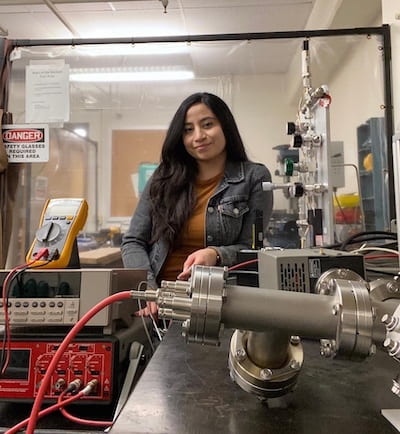
Karen E. Navarro is a PhD student in physics working with Dr. Ben Jones. Karen is an El Paso native who began her physics undergraduate at the University of Texas at El Paso, before transferring to Texas Tech University in Lubbock. She then went onto complete an internship with the USRA under a NASA-MSFC contract assisting in the calibration and analysis for the IXPE telescope She joined the UTA Neutrinos and Rare Event Searches group to begin her PhD research in 2020. She has developed a new low energy Ba2+ ion beam for barium tagging R&D and neural network-based event reconstruction techniques for event reconstruction in the NEXT-White experiment, and now leads developments of nanofabricated NuBit barium tagging chips with support from a DOE GIRA fellowship.
Akshima Negi (Graduate Student)

Akshima is a third year Graduate student. She did her masters in Physics at the Indian Institute of Technology Jodhpur. She made major contributions to an IceCube analysis searching for anomalous decoherence in Neutrino Oscillations emerging from Quantum Gravity which was featured as the cover article in Nature Physics. She now works on cooling of atomic lithium as a demonstrator for the evaporative cooling beamline for Project 8.
Morgan Elliott (Graduate Student)

Morgan Elliott is a second-year graduate student at the University of Texas at Arlington. They got their bachelor’s degree in physics from UTA as well. They led efforts in the construction of the Proto-DUNE field cage modules and worked on ultra cold tests of the electronics. Now they work on understanding scattering phenomena and cross sections in ultra cold systems for the eventual implementation into the Project 8 beamline and other tritium-based experiments.
Kara Stogsdill (Undergraduate Researcher)

Kara is a senior undergraduate student pursuing a Bachelors in Physics degree at UTA. She has been working with the group for over two years. She first worked with the NEXT-100 neutrinoless double beta decay collaboration on the electroluminescence region. Currently she is working on the Project 8 neutrino mass measurement experiment. Kara is a recipient of the AIP Outstanding Undergraduate Research award for her work on Project 8’s Zeeman Slower. She is also an officer of the undergraduate Society of Physics Students (SPS) at UTA.
Ivana Moya (Undergraduate Researcher)
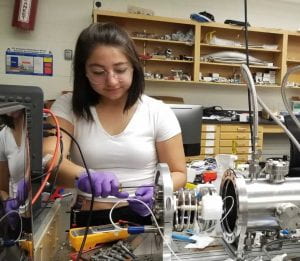
Nathan Coward (Undergraduate Researcher)

Nathan Coward is a transfer student at The University of Texas at Arlington. Having received his associates of science from TCCD, he is now pursuing a bachelor’s degree in physics. Over the course of his time spent working in industry as well as during his collegiate career he has had the opportunity to acquire a broad set of skills related to engineering, fabrication, drafting and design, electronics, physics and chemistry. Currently, Nathan works with a team of undergraduate and graduate colleagues under the direction of Dr. Ben Jones to carry out research and development for Project 8. The project 8 research group, and others like it, hope to contribute to the scientific community by improving our understanding of the standard model by better understanding the nature and properties of the neutrino.
Luis Taylor (Undergraduate Researcher)
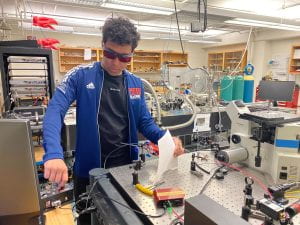
Luis Taylor is a 1st-year undergraduate student and is pursuing a bachelor’s degree in Physics. He is currently working under Dr. Ben Jones on Project 8 to contribute to building a velocity state selector by configuring an external cavity diode laser and working with the optimization of the evaporative cooling stage of the project. The area of physics that interests him the most is quantum physics especially the topics of superposition, entanglement, and quantum computing.